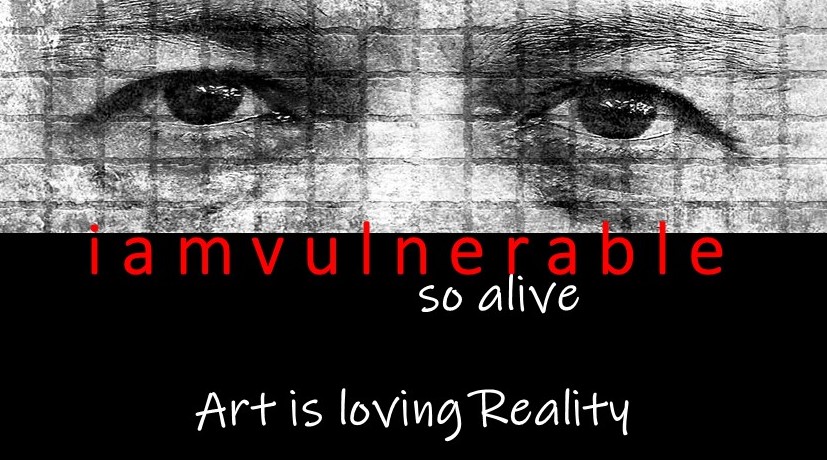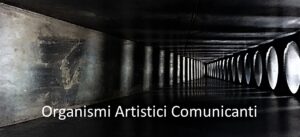← (ita / fr) →
2020-2023 RESEARCH PROJECTS
Carried out within the ![]()
 In an era of permanent crisis, where the international order is in decline and the laws of the planet have spiraled out of control due to the excessive exploitation of natural resources, the identity of today’s artist is well defined, albeit interpreted through alternative approaches and modalities: hybridising, transcending languages and cultures, whilst maintaining a sensitivity that is attentive to the context and its limitations. Balancing between different creative categories and experiencing a certain restlessness regarding definitions represents the journey of contemporary art, which inherits the torch from the movements of the early 20th century, such as Bauhaus.
In an era of permanent crisis, where the international order is in decline and the laws of the planet have spiraled out of control due to the excessive exploitation of natural resources, the identity of today’s artist is well defined, albeit interpreted through alternative approaches and modalities: hybridising, transcending languages and cultures, whilst maintaining a sensitivity that is attentive to the context and its limitations. Balancing between different creative categories and experiencing a certain restlessness regarding definitions represents the journey of contemporary art, which inherits the torch from the movements of the early 20th century, such as Bauhaus.  We must insist on the demand for a paradigm shift that the new projectuality of contemporary art must face, escaping any form of comfort zone. This research project focuses on unusual perspectives guided by the concept of transdisciplinarity, aiming to understand the complexity of the present world. We move in the unusual space of interstitial zones between painting ∞ sculpture, influenced by the language of cinema, dance, music, and photography, in order to constantly re-signify exhibition spaces and experiment with relational creative practices that reveal connections, affinities, and potential developments with the participating elements. This is the exciting necessity in the unfinished expressive research of an authorial dimension that, through the «FABRIC-WEAVE-COSMIC» of «ARTISTIC-COMMUNICATING-ORGANISMS, » is based on «CO-EXISTENCE» in creating irregular performative loops, conceived as meeting places and communities, spaces of generation and active knowledge, not just for consumption.
We must insist on the demand for a paradigm shift that the new projectuality of contemporary art must face, escaping any form of comfort zone. This research project focuses on unusual perspectives guided by the concept of transdisciplinarity, aiming to understand the complexity of the present world. We move in the unusual space of interstitial zones between painting ∞ sculpture, influenced by the language of cinema, dance, music, and photography, in order to constantly re-signify exhibition spaces and experiment with relational creative practices that reveal connections, affinities, and potential developments with the participating elements. This is the exciting necessity in the unfinished expressive research of an authorial dimension that, through the «FABRIC-WEAVE-COSMIC» of «ARTISTIC-COMMUNICATING-ORGANISMS, » is based on «CO-EXISTENCE» in creating irregular performative loops, conceived as meeting places and communities, spaces of generation and active knowledge, not just for consumption.  It represents a subsequent reversal of the trend in art, away from exhausted exclusive castes and self-referential systems that are now breathless. From here, the primordial themes of «BODY-BEYOND-MATTER, » «VULNERABILITY, » «NOMADIC ETHICS» and «CONVERGENCE-AESTHETICS» based on the creative mechanisms of Ruins, intertwine to broaden and divert the contemporary question regarding what is propagated through the para-verse. In this context, the neologism refers to the incessant degradation of virtual worlds towards the superficiality of mirror-worlds in our everyday lives.
It represents a subsequent reversal of the trend in art, away from exhausted exclusive castes and self-referential systems that are now breathless. From here, the primordial themes of «BODY-BEYOND-MATTER, » «VULNERABILITY, » «NOMADIC ETHICS» and «CONVERGENCE-AESTHETICS» based on the creative mechanisms of Ruins, intertwine to broaden and divert the contemporary question regarding what is propagated through the para-verse. In this context, the neologism refers to the incessant degradation of virtual worlds towards the superficiality of mirror-worlds in our everyday lives.
← (ita / fr) →
